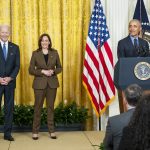An extraordinary debacle has unfolded surrounding the Secret Service’s failure to protect former President Donald Trump during his July 13 rally in Butler, Pennsylvania. Acting Secret Service Director Ronald Rowe appeared before the Senate Judiciary and Homeland Security committees to discuss this near-fatal security breach that left Trump just millimeters away from a bullet to the head, but only a grazed ear as a red badge of honor. The testimony has raised questions about whether the Secret Service should even be called a security agency anymore, as they seem to offer about as much protection as a wet paper towel against a downpour.
Rowe’s appearance followed the ouster of Kimberly Cheatle, the former Secret Service Director, who must have thought she was auditioning for a stand-up gig given her lack of coherent answers last week. Lawmakers from both sides of the aisle expressed mounting frustration as Cheatle’s testimony did little more than resemble a deer caught in headlights. It wasn’t just a job loss for her; it revealed a serious crisis in the agency’s ability to handle dignitary protection, where what should have been an epic show of security turned into an epic failure.
🚨🚨@SenRonJohnson asks Acting Secret Service Dir. Rowe if my reporting in my latest story, below, is accurate — that he is responsible for limiting counter snipers to Trump and other events that are not drivable from D.C.
Rowe says the reporting isn't true: "That is a false…
— Susan Crabtree (@susancrabtree) July 30, 2024
Acting Secret Service Director: I "could not, and I will not and I cannot understand" why the roof where the shooter carried out his attack on former President Trump was not secured. pic.twitter.com/gjK1WqrunJ
— Townhall.com (@townhallcom) July 30, 2024
The Senate hearing brought up the issue of Rowe’s apparent involvement in refusing additional security resources, such as counter snipers, for Trump’s events. Despite multiple requests, his office reportedly shot down pleas from agents responsible for Trump’s safety. This could evoke images of a secret agent playing a game of “Duck, Duck, Goose,” with Trump’s life hanging in the balance instead of merely hitting a ball around at a summer picnic. Yet, while Rowe claimed the allegations were false, reports persist, and as Senator Ron Johnson pointed out, if Rowe were so fond of his assertions, proper documentation should easily refute any claims being thrown around like confetti.
The lack of counter sniper teams raised eyebrows, especially when one considers that security decisions seemed to be based on how far agents had to drive instead of the more pressing need for protection. Knowledgeable sources indicate that it’s simpler for these highly trained personnel to roll out in a van rather than board a commercial flight, making one wonder if the Secret Service was hypothesizing a corporate retreat instead of planning for a lethal scenario. As it turns out, their convenience seemed to take precedence over the former President’s safety, a decision that could only be described as astonishingly tone-deaf.
In a turn of events that could almost be mistaken for a plot twist in a low-budget action flick, the Secret Service’s delay in communication about the shooter, Thomas Matthew Crooks, infuriatingly came nearly 100 minutes before he fired shots. With local SWAT teams having already spotted him, the details sent out by these teams got tossed around like yesterday’s trash. Ironically, the very individuals tasked to keep Trump safe seemed to be playing a game of hide-and-seek, with the stakes being, quite literally, life and death. Instead of securing a safe environment for their charge, a firefighter was killed, and two others were hurt, showing just how the Secret Service might have misplaced its supposed prime directive—to protect and serve.
As the repercussions of this monumental blunder continue to unfurl, the leadership within the Secret Service finds itself at a crossroads. Lawmakers are laser-focused on unraveling who is truly at fault for this security calamity that put Trump in harm’s way. With multiple faces changing on the job, it remains to be seen whether the Secret Service can recover from this embarrassing incident, or if they are content simply to stick to planning their next team-building exercise while they let the nation down.




